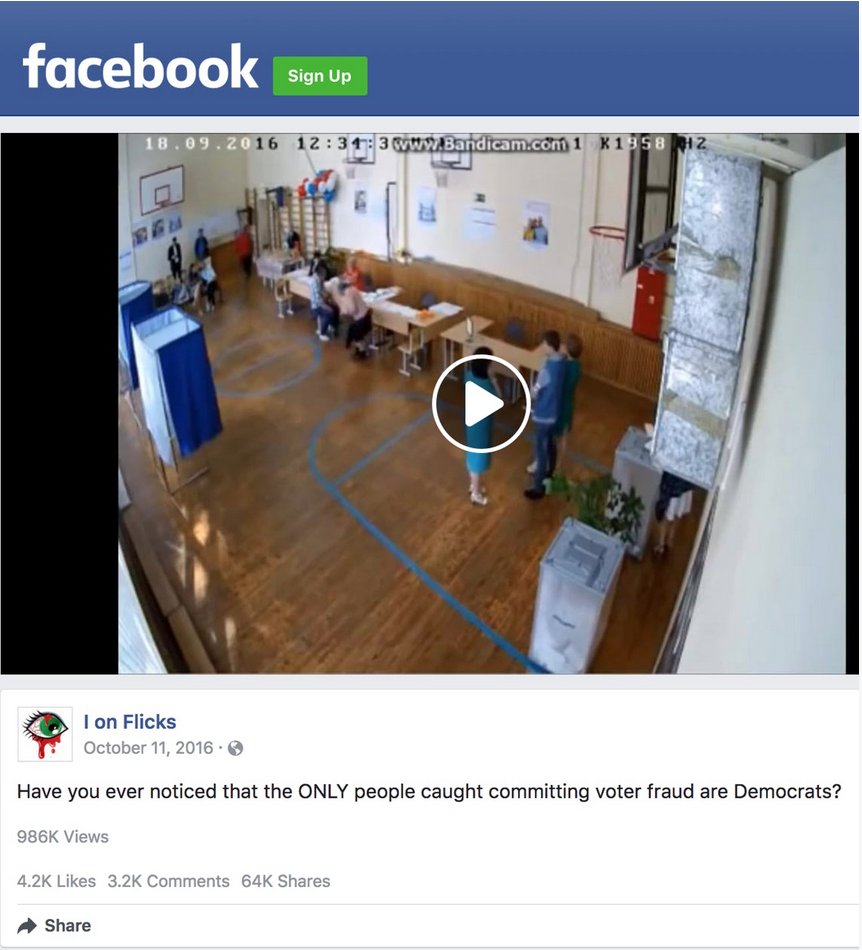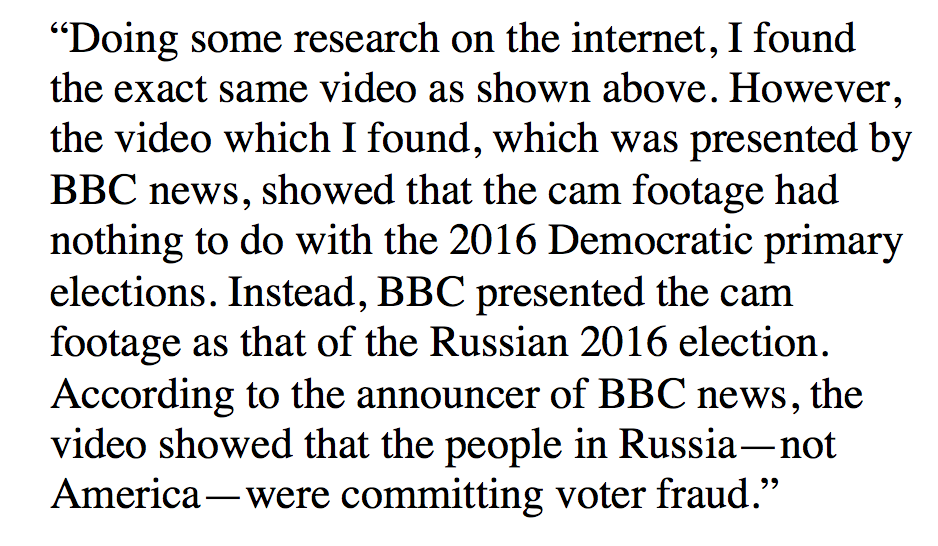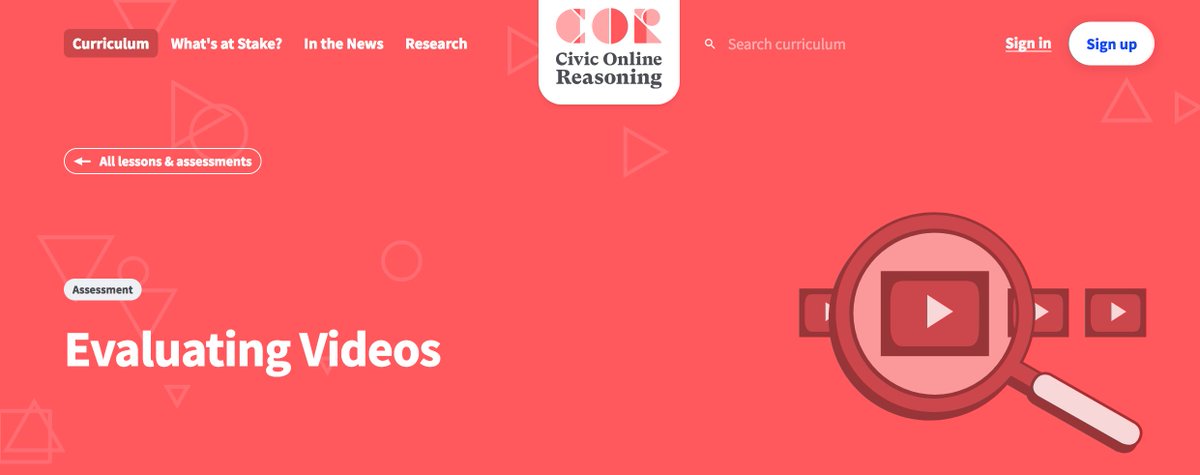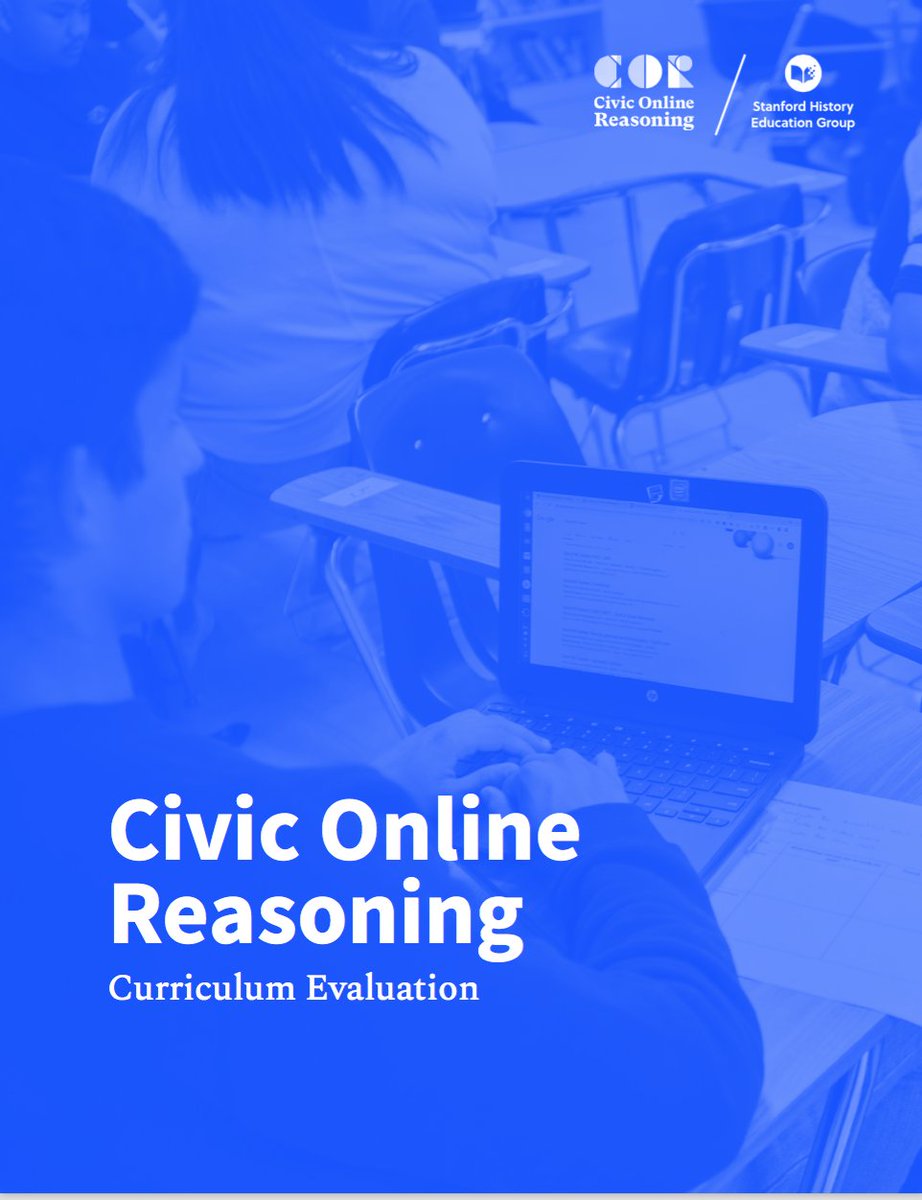52% of a national sample of 3,446 students said this FB video claiming to show ballot stuffing in the 2016 Democratic primaries was “strong evidence” of voter fraud in the U.S.
The video came from Russia.
How can we help students do better?
https://cor.stanford.edu/blog/civic-online-reasoning-national-portrait">https://cor.stanford.edu/blog/civi... 1/9
The video came from Russia.
How can we help students do better?
https://cor.stanford.edu/blog/civic-online-reasoning-national-portrait">https://cor.stanford.edu/blog/civi... 1/9
More than 3,000 students completed the task. Only three of them actually tracked down the source of the video. This student from suburban California skillfully engaged in lateral reading—leaving the video to look for information on the broader web. 2/9
To help more students become skilled consumers of digital content, we first need to understand the mistakes they’re making. For many students, seeing is believing. This student’s response is representative. 3/9
You can gauge your students’ ability to evaluate the video with this Google Forms assessment. 4/9 https://cor.stanford.edu/curriculum/assessments/evaluating-videos">https://cor.stanford.edu/curriculu...
After students complete the task, use the provided rubric and sample student responses to model the components of a strong evaluation of the video. 5/9
Students, like all of us, need multiple opportunities to practice these skills. This lesson provides students a chance to evaluate other videos. 6/9 https://cor.stanford.edu/curriculum/lessons/evaluating-videos">https://cor.stanford.edu/curriculu...
Research shows that the @CivicOnline curriculum helps students become more skilled evaluators of online information. 7/9
https://cor.stanford.edu/research/cor-curriculum-evaluation">https://cor.stanford.edu/research/...
https://cor.stanford.edu/research/cor-curriculum-evaluation">https://cor.stanford.edu/research/...
With practice, students will become adept at asking this crucial question: Who is behind the information? When they do with the voter fraud video, they’ll quickly find information debunking it. 8/9 https://www.snopes.com/fact-check/voter-fraud-in-2016-primary/">https://www.snopes.com/fact-chec...
Have you used @CivicOnline lessons or assessments? We’d love to hear about your experiences. 9/9

 Read on Twitter
Read on Twitter







